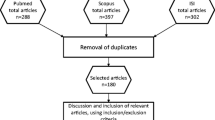Abstract
Aim
To investigate whether nurses could be a useful tool for improving the reporting rate of adverse drug reactions (ADRs). Furthermore, we wanted to study how physicians working at the study departments would respond to nurses as reporters of ADRs and if the reporting from the nurses affected the reporting rate from the physicians.
Method
Three departments of internal medicine and one unit for orthopaedics were selected for the study. Nurses with special drug responsibilities were invited to participate. At the start of the study period, the nurses received an introduction with background, objective, method and other practical issues concerning the study. After this, an education programme about ADR reporting, definitions, and ADR classification according to mechanism and organ system was given. To study their knowledge about and attitude towards ADRs, a questionnaire was handed out to the nurses. A questionnaire was also handed out to all physicians at the participating departments in order to investigate their attitude towards nurses as reporters of ADRs.
Results
Fifty-four nurses participated in the study. During the study period, a total number of 23 reports with 39 ADRs were sent to the regional centres by the nurses. Seventeen (74%) of the reports were assessed as serious. Eight of the 39 ADRs were unlabelled and all reports were considered appropriate. The reporting rate from the physicians during the study period was similar to the previous year, indicating that the nurses contributed with additional reports. At the end of the study, the nurses thought that they had enough knowledge to report ADRs. Sixty-eight percent of the physicians did not object to nurses being included as reporters of suspected ADRs.
Conclusion
Adverse drug reaction reporting by nurses could improve the overall safety of drugs.
Similar content being viewed by others
References
Bergman U, Wiholm B-E (1981) Drug related problems causing admissions to a medical clinic. Eur J Clin Pharmacol 320:193–200
Hallas J, Gram L, Grodum E, Damsbro N, Brösen K, Hagfeldt T (1992) Drug related admission to medical wards: a population based survey. Br J Clin Pharmacol 33:61–68
Einarson TR (1993) Drug - related hospital admissions. Ann Pharmacother 27:840–883
Hallas J (1996) Drug related hospital admission in subspecialites of internal medicine. Dan Med Bull 43:141–155
Smith CC, Bennett PM, Perace HM, Harrison PI, Reynolds DJ, Aronson JK, Grahame-Smith DG (1996) Adverse drug reactions in a hospital general medical unit meriting notification to the committee on safety of medicine. Br J Clin Pharmacol 42:423–429
van den Bemt LAPM, Egberts ACG, Lenderink AW, Simons KA, van der Pol WSC, Leufkens HGM (1999) Adverse drug events in hospitalized patients. Eur J Clin Pharmacol 55:155–158
Pouyanne P, Haramburu F, Imbs JL, Béugard B (2000) Admissions to hospital caused by adverse drug reactions: cross sectional incidence study. BMJ 320:1036
Mjörndal T, Danell Boman M, Hägg S, Bäckström M, Wiholm B-E, Wahlin A, Dahlqvist R (2002) Adverse drug reactions as a cause for admission to a department of internal medicine. Pharmacoepidemiol Drug Saf 11:65–72
European Commission Enterprise and Industry Directorate General (2007) Volume 9Aof the rules governing medicinal products in the European Union—guidelines on pharmacovigilancefor medicinal products for human use http://ec.europa.eu/enterprise/pharmaceuticals/eudralex/vol-9/pdf/vol9A_2007-01.pdf
Medical Products Agency (2001) Code of Statutes. LVFS 2001:12
Wiholm B-E, Olsson S (1989) Spontaneous reporting system outside the United States. In: Strom BL (ed) Pharmacoepidemiology. Churchill Livingstone, New York, pp 119–134
Samuelsson E, Hägg S, Bäckström M, Granberg K, Mjörndal T (1996) Thrombosis caused by oral contraceptives. Underreporting to the adverse effects registry (in Swedish). Läkartidningen 93(37):3117–3124
Bäckström M, Mjörndal T, Dahlqvist R (2004) Under-reporting of serious adverse drug reactions in Sweden. Pharmacoepidemiol Drug Saf 13:483–487
Hall M, McCormack P, Arthurs N, Feely J (1995) The spontaneous reporting of adverse drug reactions by nurses. Br J Clin Pharmacol 40:173–175
Morrison-Griffiths S, Pirmohamed M (2000) Specialist nurses reporting of adverse drug reactions. Prof Nurse 15:300–304
Burkhardt ME, Ripepe SD (1992) Reporting adverse drug reactions is everyone’s business. Topics Hosp Pharm Manage 12:31–39
Morrison-Griffiths S, Walley TJ, Park BK, Breckenridge AM, Pirmohamed M (2003) Reporting of adverse drug reactions by nurses. Lancet 361:1346–1347
Bäckström M, Mjörndal T, Dahlqvist R (2002) Spontaneous reporting of adverse drug reactions by nurses. Pharmacoepidemiol Drug Saf 11:647–650, Erratum in Pharmacoepidemiol Drug Saf 2003;12:157–159
World Health Organisation (1972) International drug monitoring: the role of national centres. Technical report no. 498. WHO, Geneva
Acknowledgements
This study was supported by the Medical Product Agency, Uppsala, Sweden. A special thanks to all the participating nurses at the Department of Internal Medicine in Norrlands Universitetssjuhus Umeå, Östersunds sjukhus, Blekingesjukhuset in Karlskrona and the orthopaedic ward at Blekingesjukhuset in Karlshamn for their participation in this survey, and their enthusiasm, willingness to contribute and meaningful and interesting discussions.
Author information
Authors and Affiliations
Corresponding author
Rights and permissions
About this article
Cite this article
Bäckström, M., Ekman, E. & Mjörndal, T. Adverse drug reaction reporting by nurses in Sweden. Eur J Clin Pharmacol 63, 613–618 (2007). https://doi.org/10.1007/s00228-007-0274-8
Received:
Accepted:
Published:
Issue Date:
DOI: https://doi.org/10.1007/s00228-007-0274-8




